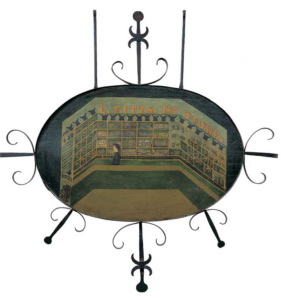The museum known earlier in its history as the Museum of Early American Folk Arts (1961–1966) and the Museum of American Folk Art (1966–2001), was established in NewYork City in 1961. One of very few urban museums in the United States devoted to folk art, the American Folk Art Museum has supported a broadly based programof exhibitions since it was founded. During its first decade, the institution staked out a national and even international purview for its programming. Since then it has presented more than 220 exhibitions, many of which also have been seen in other museums through an active traveling exhibition program.At the time of its founding, the American Folk Art Museum was without a collection of its own, unlike the Abby Aldrich Rockefeller Folk Art Center or theShelburne Museum, which were established around distinguished collections. The first object to enter the museum’s collection was the now famous Flag Gate (c. 1876), the gift in 1962 of Herbert W.Hemphill Jr.(1929–1998), one of the institution’s founding trustees and an influential pioneer in the field. Since then the museum’s holdings have grown to encompass more than4,000 objects in various media, including the highly important collection formed by Ralph Esmerian (1940–), president of the museum’s board from 1977 to 1999, andchairman since then. Among the major works of art in the museum’s collection is Ammi Phillips’s (1788–1865) great portrait, Girl in Red Dress with Her Cat and Dog (c. 1830).The museum publishes Folk Art (formerly The Clarion), a quarterly magazine; issues exhibition catalogs; and offers graduate courses in folk art studies inassociation with New York University and as part of the Folk Art Institute, an accredited educational division of the museum. In 1998, the museum established TheContemporary Center, a division devoted to the collection, exhibition, and study of the paintings, sculpture, and installations of twentieth- and twenty-first-century, self-taught artists. In 2001, The Contemporary Center announced the acquisition, by purchase and gift, of twenty-four works of art by Chicago artist Henry Darger (1892– 1973), as well as an archive of Darger’s manuscript books, tracings, drawings, and source materials.After many years without adequate space, the museum inaugurated its own building in late 2001. Designed by architects Tod Williams and Billie Tsien, the 30,000-square-foot structure, at 45 West 53rd Street in New York City, includes a library, auditorium, classrooms, and exhibition galleries, among other facilities.

